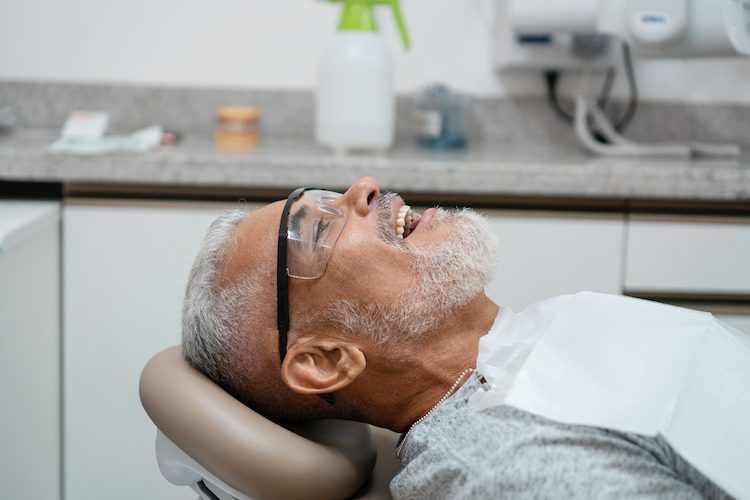Tooth extraction involves the careful removal of a tooth from its socket in the jawbone. Dentists or oral surgeons typically perform this procedure. They may recommend extraction for various reasons. Common reasons include advanced tooth decay, severe gum disease, or overcrowding of teeth. Understanding the procedure can help reduce anxiety.
Consulting with Your Dentist
Before the extraction, consult your dentist for a thorough examination. They will examine your mouth and take X-rays to assess the condition of the tooth and surrounding bone. This helps them plan the extraction procedure accurately. Share your complete medical history with your dentist. Inform them about any medications you are currently taking.
Discuss any known allergies or past reactions to anesthesia. This information is crucial for ensuring your safety during the procedure. Your dentist may also discuss alternative treatments if they believe another option might be more suitable. This consultation is an opportunity to build trust and confidence in your dental care provider.
Preparing Mentally and Physically
Mental preparation is crucial before undergoing a tooth extraction. Anxiety and fear are common emotions before dental procedures. Practice relaxation techniques such as deep breathing exercises or meditation. Visualization can also help calm your nerves. Imagine a positive outcome and focus on the benefits of the procedure.
Physical preparation is equally important. Follow your dentist’s pre-extraction instructions carefully. They may advise you to avoid eating or drinking for a certain period before the procedure. This is especially true if you will receive sedation. Fasting could help reduce the risk of complications during anesthesia. Wear comfortable clothing on the day of the procedure to ensure you are relaxed.
Arranging Transportation
Arrange for someone to drive you home after the procedure. The effects of sedation can impair your ability to drive safely. Having a trusted friend or family member accompany you is advisable. They can provide emotional support and ensure your safe return home. Plan your transportation in advance to avoid last-minute stress or confusion. Discuss the procedure with your companion so they understand what to expect. They may need to assist you with post-operative care instructions. Clear communication can help make the recovery process smoother for both of you.
Preparing Your Home
Prepare your home environment for recovery before the procedure. Stock up on soft foods like yogurt, applesauce, and soup. These foods are easier to eat after an extraction and require minimal chewing. Avoid spicy, acidic, or crunchy foods that might irritate the extraction site.
Arrange for a comfortable resting area with pillows and blankets. You may need to rest and elevate your head to reduce swelling. Having everything prepared in advance can help ease your recovery process.
Managing Pain and Discomfort
Pain and discomfort are common after a tooth extraction. Your dentist will likely prescribe pain medication to manage this. Follow their instructions carefully to ensure effective pain relief. Ice packs can also help reduce swelling and numb the area. Apply them to your cheek for 15 minutes at a time. This can help minimize discomfort and promote healing. Follow your dentist’s advice on how to manage pain and prevent complications. Keeping your head elevated and resting can also aid in reducing swelling.
Post-Extraction Care
Proper care after extraction is crucial for healing. Follow your dentist’s post-operative instructions closely. Keep the extraction site clean to prevent infection. Rinse your mouth gently with warm salt water as recommended. Avoid vigorous rinsing or spitting, as these actions can disrupt the healing process.
Maintain a soft diet for a few days to avoid irritating the extraction site. Gradually reintroduce solid foods as your comfort level improves. Avoid smoking or using tobacco products, as they can hinder healing. Attend follow-up appointments with your dentist to monitor healing progress. Good oral hygiene and adherence to care instructions ensure a quick recovery.
Monitoring for Complications
Monitor for any complications after the extraction. Normal symptoms include swelling, slight bleeding, and discomfort. Severe pain, persistent bleeding, or fever may indicate complications. Contact your dentist immediately if you experience these symptoms. Early intervention could prevent further issues and promote healing.
Regular follow-up appointments ensure proper healing and allow your dentist to address any concerns. Keep an eye on the extraction site for signs of infection, such as redness or pus. Maintaining communication with your dentist helps ensure a smooth recovery process.
At Historic Hyde Park Dentistry, we are dedicated to providing a comforting and safe dental experience. If you need an extraction, proper preparation is key. Contact our office today to schedule a consultation and learn more.

